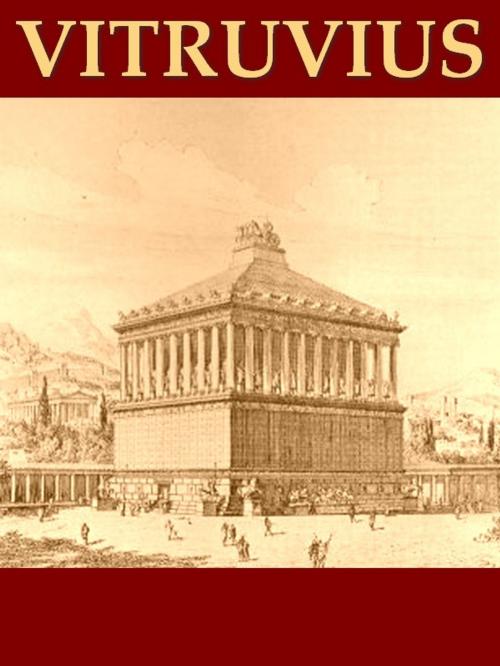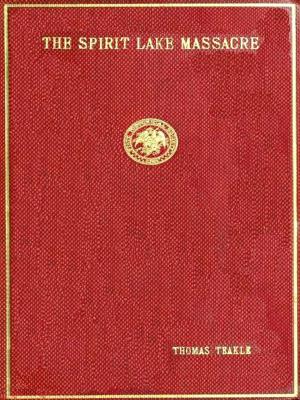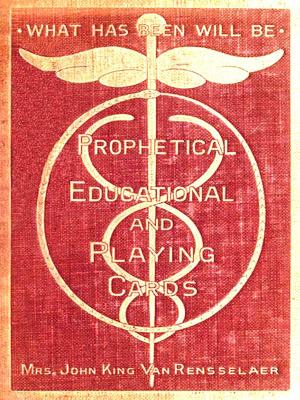The Ten Books on Architecture
Nonfiction, Science & Nature, Technology, Construction & Construction Trades, Home & Garden, The Home, Design & Construction, History, Ancient History, Rome| Author: | Marcus Vitruvius Pollio, Morris Hicky Morgan, Translator, Herbert Langford Warren, iIllustrator | ISBN: | 1230000173737 |
| Publisher: | VolumesOfValue | Publication: | September 6, 2013 |
| Imprint: | Language: | English |
| Author: | Marcus Vitruvius Pollio, Morris Hicky Morgan, Translator, Herbert Langford Warren, iIllustrator |
| ISBN: | 1230000173737 |
| Publisher: | VolumesOfValue |
| Publication: | September 6, 2013 |
| Imprint: | |
| Language: | English |
This edition features
• illustrations
• a linked Table of Contents and Index
CONTENTS
BOOK I
Preface
The Education of the Architect
The Fundamental Principles of Architecture
The Departments of Architecture
The Site of a City
The City Walls
The Directions of the Streets; with Remarks on the Winds
The Sites for Public Buildings
BOOK II
Introduction
The Origin of the Dwelling House
On the Primordial Substance according to the Physicists
Brick
Sand
Lime
Pozzolana
Stone
Methods of building Walls
Timber
Highland and Lowland Fir
BOOK III
Introduction
On Symmetry: in Temples and in the Human Body
Classification of Temples
The Proportions of Intercolumniations and of Columns
The Foundations and Substructures of Temples
Proportions of the Base, Capitals, and Entablature in the Ionic Order
BOOK IV
Introduction
The Origins of the Three Orders, and the Proportions of the Corinthian Capital
The Ornaments of the Orders
Proportions of Doric Temples
The Cella and Pronaos
How the Temple should face
The Doorways of Temples
Tuscan Temples
Circular Temples and Other Varieties
Altars
BOOK V
Introduction
The Forum and Basilica
The Treasury, Prison, and Senate House
The Theatre: its Site, Foundations, and Acoustics
Harmonics
Sounding Vessels in the Theatre
Plan of the Theatre
Greek Theatres
Acoustics of the Site of a Theatre
Colonnades and Walks
Baths
The Palaestra
Harbours, Breakwaters, and Shipyards
BOOK VI
Introduction
On Climate as determining the Style of the House
Symmetry, and Modifications in it to suit the Site
Proportions of the Principal Rooms
The Proper Exposures of the Different Rooms
How the Rooms should be suited to the Station of the Owner
The Farmhouse
The Greek House
On Foundations and Substructures
BOOK VII
Introduction
Floors
The Slaking of Lime for Stucco
Vaultings and Stucco Work
On Stucco Work in Damp Places, and on the Decoration of Dining Rooms
The Decadence of Fresco Painting
Marble for use in Stucco
Natural Colours
Cinnabar and Quicksilver
Cinnabar (continued)
Artificial Colours. Black
Blue. Burnt Ochre
White Lead, Verdigris, and Artificial Sandarach
Purple
Substitutes for Purple, Yellow Ochre, Malachite Green, and Indigo
BOOK VIII
Introduction
How to find Water
Rainwater
Various Properties of Different Waters
Tests of Good Water
Levelling and Levelling Instruments
Aqueducts, Wells, and Cisterns
BOOK IX
Introduction
The Zodiac and the Planets
The Phases of the Moon
The Course of the Sun through the Twelve Signs
The Northern Constellations
The Southern Constellations
Astrology and Weather Prognostics
The Analemma and its Applications
Sundials and Water Clocks
BOOK X
Introduction
Machines and Implements
Hoisting Machines
The Elements of Motion
Engines for raising Water
Water Wheels and Water Mills
The Water Screw
The Pump of Ctesibius
The Water Organ
The Hodometer
Catapults or Scorpiones
Ballistae
The Stringing and Tuning of Catapults
Siege Machines
The Tortoise
Hegetor's Tortoise
Measures of Defence
Note on Scamilli Impares
Index
About the Author
"Marcus Vitruvius Pollio (born c. 80–70 BC, died after c. 15 BC) was a Roman author, architect, and engineer during the 1st century BC perhaps best known for his multi-volume work entitled De Architectura.
...
Mainly known for his writings, Vitruvius was himself an architect. In Roman times architecture was a broader subject than at present including the modern fields of architecture, construction management, construction engineering, chemical engineering, civil engineering, materials engineering, mechanical engineering, military engineering and urban planning. Frontinus mentions him in connection with the standard sizes of pipes. He is often credited as father of architectural acoustics for describing technique of echeas placement in theaters."--Wikipedia
This edition features
• illustrations
• a linked Table of Contents and Index
CONTENTS
BOOK I
Preface
The Education of the Architect
The Fundamental Principles of Architecture
The Departments of Architecture
The Site of a City
The City Walls
The Directions of the Streets; with Remarks on the Winds
The Sites for Public Buildings
BOOK II
Introduction
The Origin of the Dwelling House
On the Primordial Substance according to the Physicists
Brick
Sand
Lime
Pozzolana
Stone
Methods of building Walls
Timber
Highland and Lowland Fir
BOOK III
Introduction
On Symmetry: in Temples and in the Human Body
Classification of Temples
The Proportions of Intercolumniations and of Columns
The Foundations and Substructures of Temples
Proportions of the Base, Capitals, and Entablature in the Ionic Order
BOOK IV
Introduction
The Origins of the Three Orders, and the Proportions of the Corinthian Capital
The Ornaments of the Orders
Proportions of Doric Temples
The Cella and Pronaos
How the Temple should face
The Doorways of Temples
Tuscan Temples
Circular Temples and Other Varieties
Altars
BOOK V
Introduction
The Forum and Basilica
The Treasury, Prison, and Senate House
The Theatre: its Site, Foundations, and Acoustics
Harmonics
Sounding Vessels in the Theatre
Plan of the Theatre
Greek Theatres
Acoustics of the Site of a Theatre
Colonnades and Walks
Baths
The Palaestra
Harbours, Breakwaters, and Shipyards
BOOK VI
Introduction
On Climate as determining the Style of the House
Symmetry, and Modifications in it to suit the Site
Proportions of the Principal Rooms
The Proper Exposures of the Different Rooms
How the Rooms should be suited to the Station of the Owner
The Farmhouse
The Greek House
On Foundations and Substructures
BOOK VII
Introduction
Floors
The Slaking of Lime for Stucco
Vaultings and Stucco Work
On Stucco Work in Damp Places, and on the Decoration of Dining Rooms
The Decadence of Fresco Painting
Marble for use in Stucco
Natural Colours
Cinnabar and Quicksilver
Cinnabar (continued)
Artificial Colours. Black
Blue. Burnt Ochre
White Lead, Verdigris, and Artificial Sandarach
Purple
Substitutes for Purple, Yellow Ochre, Malachite Green, and Indigo
BOOK VIII
Introduction
How to find Water
Rainwater
Various Properties of Different Waters
Tests of Good Water
Levelling and Levelling Instruments
Aqueducts, Wells, and Cisterns
BOOK IX
Introduction
The Zodiac and the Planets
The Phases of the Moon
The Course of the Sun through the Twelve Signs
The Northern Constellations
The Southern Constellations
Astrology and Weather Prognostics
The Analemma and its Applications
Sundials and Water Clocks
BOOK X
Introduction
Machines and Implements
Hoisting Machines
The Elements of Motion
Engines for raising Water
Water Wheels and Water Mills
The Water Screw
The Pump of Ctesibius
The Water Organ
The Hodometer
Catapults or Scorpiones
Ballistae
The Stringing and Tuning of Catapults
Siege Machines
The Tortoise
Hegetor's Tortoise
Measures of Defence
Note on Scamilli Impares
Index
About the Author
"Marcus Vitruvius Pollio (born c. 80–70 BC, died after c. 15 BC) was a Roman author, architect, and engineer during the 1st century BC perhaps best known for his multi-volume work entitled De Architectura.
...
Mainly known for his writings, Vitruvius was himself an architect. In Roman times architecture was a broader subject than at present including the modern fields of architecture, construction management, construction engineering, chemical engineering, civil engineering, materials engineering, mechanical engineering, military engineering and urban planning. Frontinus mentions him in connection with the standard sizes of pipes. He is often credited as father of architectural acoustics for describing technique of echeas placement in theaters."--Wikipedia















